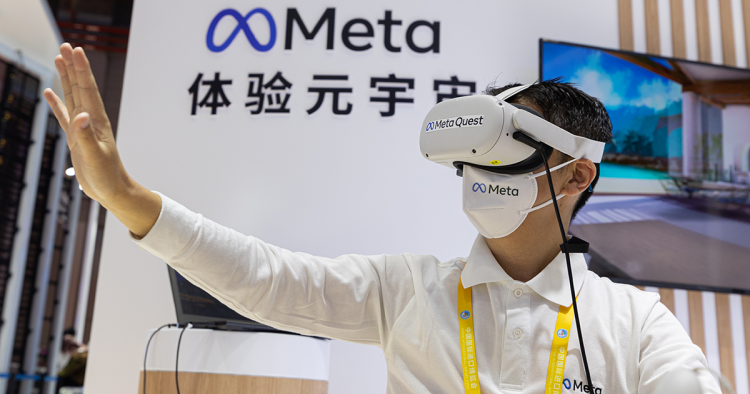A review of The Metaverse: And how it will revolutionize everything by Matthew Ball. Published by Liveright, July 2022.
“Metaverse” has become one of the most popular buzzwords in recent years. From Facebook changing its name to “Meta” and Microsoft announcing its metaverse partnership with the firm to Chinese tech giants embarking on a vision to establish “Hyper Digital Reality,” virtual or “metaversal” existence has become an enigma in the digital world. While many argue that the metaverse is still only a theory, others consider the shifting stances of the world’s biggest tech giants like Microsoft, Meta, Google, Nvidia, and Sony as signs of significant announcements and developments on the horizon.
But even though the metaverse is a topic of considerable speculation, the fundamental nature of its existence is still only vaguely understood by most and often confused with other emerging technologies like blockchain and Web3.
Matthew Ball, former head of strategy for Amazon Studios, answers some of the most pertinent questions and dilemmas surrounding the concept of the metaverse in his recent book, The Metaverse: And how it will revolutionize everything. The book is divided into three parts, elaborating on the definition of the metaverse, how it will be built, and how it is expected to revolutionize everything, as the book’s title suggests. The three parts span over 15 chapters, each answering a particular question or covering a specific aspect of the metaverse.
Ball starts the book by explaining the confusion and uncertainties around the metaverse. He clarifies the differences between the past models of virtual or parallel existence in games and entertainment experiences like Second Life and Minecraft and the differences between the virtual world (or the internet) as we know it and the concept of the metaverse that some of the biggest corporate firms are trying to establish today. He highlights why the metaverse needs to be an open platform (like the internet) and gives several reasons why that might not be the case when it eventually becomes a reality.
He explains the steps being taken by the likes of Microsoft and Meta, as well as Chinese tech giants like Tencent, Alibaba, and ByteDance, in positioning themselves as the leaders of the future metaverse. Finally, he decodes the appearance of this digital gold rush by underlining the possibilities of the metaverse transforming contemporary societal structures and engagements and underscoring that those who control the metaverse will wield extraordinary soft power vis-à-vis future generations. Ball explains that while the future is hard to predict even for the pioneers working to shape the metaverse, there are expectations that it will kick-start the development of new standards and the creation of new fundamentals that govern the virtual world.
In the second part of the book, Ball elaborates on the technological improvements needed for the realization of the metaverse, from real-time 3D rendering technology to massively scaled interoperable networks with synchronous and persistent capabilities. He highlights the role that emerging decentralized concepts like Web3 and blockchain will play in developing the foundational infrastructural frameworks of the metaverse, and going into detail, Ball impressively explains the technological nuances and requirements for the metaverse in the hardware, networking bandwidth, and computing realms.
Some of the most exciting questions are then answered in part three of the book, where Ball comments on when the metaverse might arrive and who will be the winners and losers in this new age. He emphasizes that though the realization of the metaverse may seem far off, each of the underlying technologies needed for metaversal existence is improving on an annual basis, and tech giants’ growing focus and increasing investment in the field make it clear that something is definitely happening. Further, he analyzes the investments made and success achieved by various tech giants (Google, Meta, Microsoft, etc) in recent years to give a glimpse of possible winners and losers in the emerging battle over the metaverse. In the end, Ball also introduces arguments on the emerging tech war between the West and China and takes cues from the current geopolitical trends to opine on why China’s metaverse will be different from its Western counterpart.
Given how concepts related to the metaverse can be complex, vague, and difficult to grasp, Ball’s book is a remarkable resource for getting up to speed on what the age of the metaverse on the horizon might hold.
Divyanshu Jindal is a Research Associate with NatStrat, A Centre for Research on Strategic and Security Issues based in New Delhi. His research focuses on the Geopolitics of Tech, InfluenceOps and InfoWar. He was previously associated as a Researcher with the Centre for Air Power Studies, New Delhi and as a System Engineer with Fidelity Investments.
Photo by VCG/VCG via Getty Images
The Middle East Institute (MEI) is an independent, non-partisan, non-for-profit, educational organization. It does not engage in advocacy and its scholars’ opinions are their own. MEI welcomes financial donations, but retains sole editorial control over its work and its publications reflect only the authors’ views. For a listing of MEI donors, please click here.













